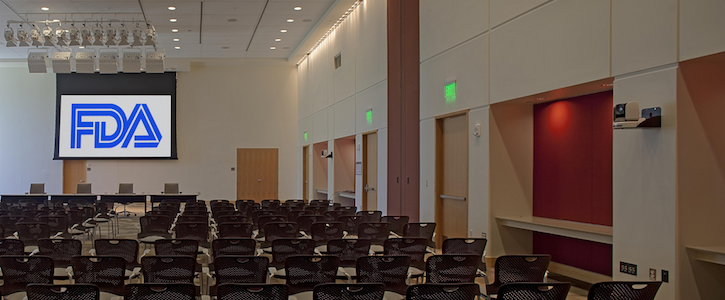How the FDA Is Trying to Promote Med-Tech Innovation
It’s all about insurance coverage and scientific rigor.

Health insurance companies, including United Health Group and CareFirst, are joining a pilot program that’s designed to arm medical device manufacturers with the insights necessary to get their innovations approved by the U.S. Food and Drug Administration (FDA) and covered by payers more quickly.
FDA Commissioner Scott Gottlieb, M.D., broke the news in a speech yesterday, during which he also unveiled new draft guidance that is intended to help med-tech companies improve their device development efforts to meet the agency’s evidence-based standards and ultimately spur more innovation in the U.S. Today, the FDA followed up the speech with the release of the QUiK Review pilot, a program that is meant to streamline lower-risk device approvals by 30 percent.
>> READ: These Data Security Challenges Are Plaguing Healthcare
“We’re focused on ensuring efficient, timely access to new technologies but also to making sure that the same policies that promote these goals also make our regulatory programs more rigorous, more science-based and more effective,” Gottlieb said at the Medical Device Innovation Consortium 2018 Annual Public Forum in Washington, D.C.
The speech came months after the release of the documentary film “The Bleeding Edge,” which criticized the FDA for how it has long handled the regulation of medical devices. The movie inspired anger among those inside and outside healthcare, prompting calls for change.
Private Payer Program
Under the insurer pilot, the FDA hopes to crunch the time it takes for a device to go from agency approval to patient access. Gottlieb said that requires earlier involvement of health insurance companies, an idea that inspired a pilot that enables manufacturers to volunteer to receive feedback from the FDA, health-tech experts and insurers in pre-submission meetings.
United Health Group and CareFirst are two of the nation’s largest private health insurance companies, and they join six other outside stakeholders in pushing the initiative forward.
“By enabling early dialogue between device makers and payers, the FDA hopes to shorten the time between FDA approval and coverage decisions, particularly for new and innovative devices,” Gottlieb said.
The program typically receives one “product inquiry” per week.
QUiK Review
Under this initiative, “well understood, lower-risk” device submissions may be reviewed for a maximum of 60 days, as opposed to the prior 90-day limit. The idea: The FDA will receive and assess information more efficiently, through a digital format that enables staff members to focus mostly on riskier devices.
“This new approach is like a Turbo Tax for information submitted in 510ks,” Gottlieb said.
Draft Guidance for Benefit and Risk Determinations
Finally, the FDA released a rough framework of how it analyzes uncertainty when weighing risk and benefits in various scenarios. Gottlieb said the document “advances a rigorous, methodical and science-based approach,” in support of making sound premarket decisions, particularly when it comes to medical devices for small patient populations, such as those with rare diseases.
“The FDA is working continuously to modernize our organization and review processes,” he added. “We want to ensure that we remain a bridge, not a barrier, to med-tech innovation.”
Get the best insights in healthcare analytics directly to your inbox.
Related
How Government and Healthcare Are Trying to Strengthen Cybersecurity
What to Do Before and After a Data Breach
3 Things That Healthcare Must Understand About Cybersecurity